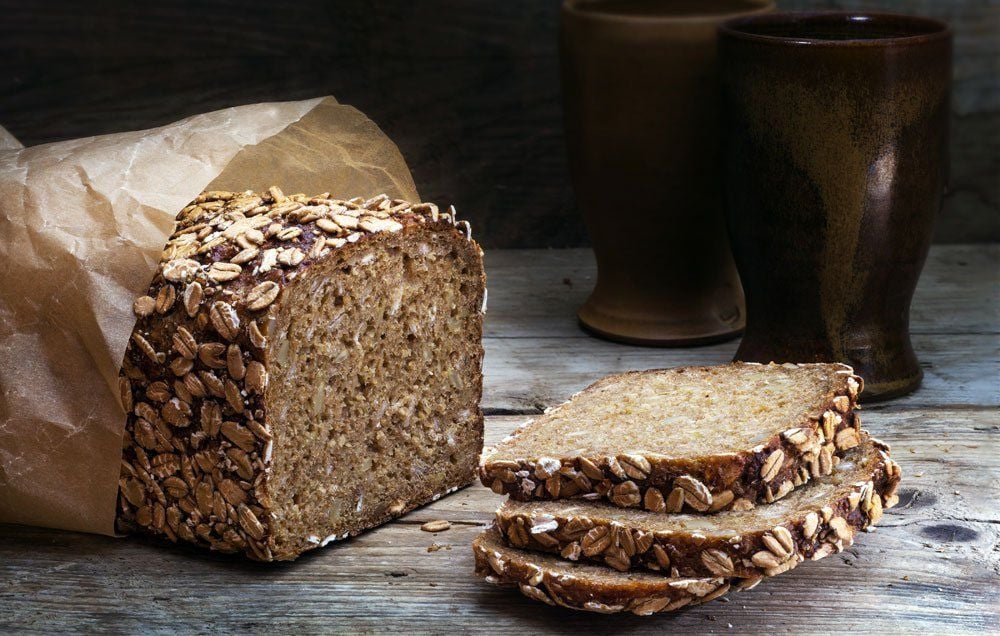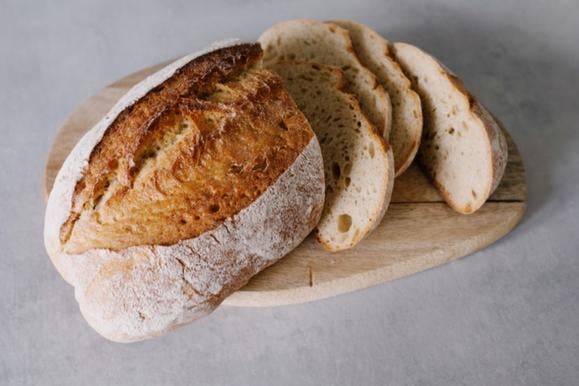What does organic bread mean?
If you chance upon some organic bread as you walk through a bakery or shop online, don’t think that you are in Paris or in a hip lifestyle store. Organic bread is a lot more popular than you might think. Instead, the only thing that should concern you is whether this is worth adding to your grocery list. What does organic bread mean? to know the answer to that, let’s define “organic bread.”
What Is Organic Bread?
The term “organic” refers to how the ingredients have been grown and used, not so much about the product itself. The Food and Drug Administration (FDA) doesn’t regulate the term. It relies on the policies and definitions of the US Department of Agriculture.
Because of the danger that anyone can slap “organic” into their labels, the USDA has set some criteria on what makes something organic. These include but are not limited to the following:
- The soil where the ingredients, like wheat, grew should have not been in contact with prohibited substances such as commercial pesticides and herbicides for the last three years before the harvest.
- If the farmer needs to use a synthetic substance, it still needs to be approved based on its possible effects on the environment and human health. The USDA already has a handy list of these approved (and disapproved) substances.
- For a product to be organic, its producers, such as farmers, should have maximized all possible natural-based resources.
- When it comes to meat, it can be considered organic if the farm follows sustainable, humane animal agriculture practices. For example, the animals were free to live according to their natural behavior like cattle dining on grass or chicken moving on a free range. Moreover, the feed should be 100 percent organic (which means free of chemicals), and the farmers didn’t provide any synthetic hormones or antibiotics to the animals.
A product is also organic if it hasn’t gone through any processes like sewage sludge, ionizing radiation, and genetic engineering. The farming methods are also under the guidance and monitoring of the National Organic Program of the USDA to ensure they follow all regulations.
Is Your Organic Bread Really Organic?
The definition of “organic” can become murky once a product contains several ingredients. There’s always the big question of whether it stops being organic if it contains a single non-organic ingredient.
According to the USDA, it can still be organic when it doesn’t contain any artificial preservatives, flavor, and color. Meanwhile, NSF shared that a 100 percent organic product needs to have all its ingredients organic, except for salt and water.
But there’s some leeway here. In some cases, it’s nearly impossible to have all ingredients organic, especially with bread. Baking soda, for example, is not organic. In situations like this, the product can still add “organic” in its label as long as 95 percent of its ingredients pass the standards.
In the end, do your research. Don’t just depend on the label. Learn more deeply how a bakery makes its organic bread. You can begin with Inked Organics Bread, which currently sells some of the tastiest, healthiest California bread.
Is organic bread healthy?
Is Organic Bread Better?
Consumers may find it surprising that organic bread will taste and smell better than conventional ones. There are two reasons for this:
- First, usually, organic products don’t go through extensive manufacturing processes, so the ingredients can retain a lot of their nutritive value.
- Second, they don’t contain additives, preservatives, or other synthetic ingredients that could be damaging to the microbiome. In fact, organic bread may help in improving one’s digestion. In the long run, they are less likely to cause problems in the gut.

What Is the Difference Between Organic Bread and Regular Bread?
Organic bread uses at least 95 percent organic ingredients. None of it should be made from a genetically modified organism (GMO). They also contain more natural preservatives.
What Is the Best Organic Bread to Eat?
Contrary to popular belief, organic bread has a lot of varieties. Again, “organic” refers to the process, not to the product itself. Some of the best types include:
- Flaxseed or other nut-based bread like chia or sesame
- Gluten-free bread (Gluten is a protein present in many types of wheat. It doesn’t have any nutritive value, but bakers use it to make something like dough stretchable. The problem is, it can cause severe symptoms in some people, especially those with celiac disease.)
- Oat bread
- Sourdough
- Bread from sprouted whole grains
- Whole wheat
What Is the Difference Between Organic Bread and Fresh Bread?
To be clear, fresh bread can be organic or non-organic. In the same manner, organic bread can be fresh or not. As for this question, the best bread is fresh organic bread.
But what is fresh bread? It doesn’t have anything to do with the ingredients but the difference between when it was made and when it was sold. Any bread may still be considered fresh if it’s been produced over the last 24 hours or within a day.
Note, though, that some types of bread may have different peaks in terms of flavor, like sourdough. It may be best to eat within 24 to 48 hours after you buy it.
Which Bread Is the Best for Weight Loss?
Unlike what most people think, carbs are not the enemy for those trying to maintain or lose weight. In fact, the body needs them as its source of fuel. But not all carbs are created equal. There are at least two types of carbs: simple and complex carbs, and this is based on their molecular structure. White bread is an example of a simple carb, while whole wheat is complex. In one of the studies that compared the effects of both types of bread, participants lost more belly fat when they consumed whole wheat than refined or simple carbs because of the following reasons:
- Whole grains, like whole-wheat bread, contain significant fiber that can help someone feel full for a long time. Most of all, it slows down the breakdown of glucose. This is important because a sudden increase in blood sugar can make someone prone to a crash later. In the short term, a person feels hungry more quickly. Over time, the constant sudden rise and fall of sugar can increase the odds of developing insulin resistance or diabetes.
- Whole grains are likely to contain more vitamins and minerals than simple carbs like white bread. These can reduce the risk of chronic inflammation and cellular damage.
- Whole wheat bread is less likely to damage the gut. This matters because the state of one’s microbiome can also correlate with the risk of obesity.
What Is the Healthiest Flour to Make Bread With?
The healthiest flour is whole wheat, which is surprisingly easy to use. In fact, you don’t need to make adjustments as far as the amounts are concerned. You can also use it for any flour-based recipes, like bread, pizza, or muffins.
As expected, the texture is different, but this is because it retains a lot of its fiber, which is amazing for your digestive system.
What is the difference between organic bread and regular bread?
What is the healthiest flour to make bread with?
What Happens When You Eat Too Much Bread?
Too much of anything is bad even if it’s whole-wheat bread. Consuming a lot of carbohydrates can still increase your chances of becoming overweight or obese, as well as developing metabolic problems like diabetes. This is because the body stores any excess sugar into fat.
How Much Bread Should You Eat a Day to Lose Weight?
There’s no official guideline as to how many slices of bread you can eat. For a healthy diet, which contains about 1,800 to 2,000 calories, a person may consume six slices a day. It can be a combination of refined or unrefined organic bread.
Will I Lose Weight if I Stop Eating Bread?
Yes, a person can still lose weight when they stop eating bread because nutrition is just half of the equation in weight loss. There’s also physical movement and stress management.
But this doesn’t mean that consuming bread alone can make a person gain or lose weight. To keep oneself healthy, a person needs to consume products like bread in moderation.
Is Eating Bread Everyday Bad?
Eating bread daily is not bad if: the total carbohydrates consumed in a day doesn’t go beyond the dietary guidelines or the one set by one’s physician and the quality of bread is great.
As mentioned, white bread may increase the risk of insulin resistance or diabetes because of how it challenges the body’s ability to control glucose. On the other hand, unrefined carbs like whole-wheat may provide the body with fiber, vitamins, and minerals.
Is Sourdough Bread Healthier Than White Bread?
Sourdough is a type of bread made by fermenting dough with yeast and lactobacilli, a type of probiotic. This starter culture releases lactic acid, which gives the bread its sour taste (hence, its name). It also helps extend its life, which can last for four to five days.
Sourdough bread is also healthier than other types of bread, especially white, because the probiotic helps maintain the gut flora. Moreover, it is easier to digest because fermentation helps break down many proteins including gluten. This may explain why some patients with celiac can consume sourdough. Like whole wheat, sourdough can retain a lot of its fiber, so it supports blood glucose management.
So, How Much Is Too Much Bread?
Rather than thinking of the number of slices, focus on how much carbohydrate you can eat in a day. The dietary guidelines say that it should compose between 45 and 65 percent of your total daily calories.
Focus too on the quality of the carbohydrate. When it comes to bread, organic whole wheat or unrefined fresh bread, like that of Inked Organics Bread, is the best choice.


